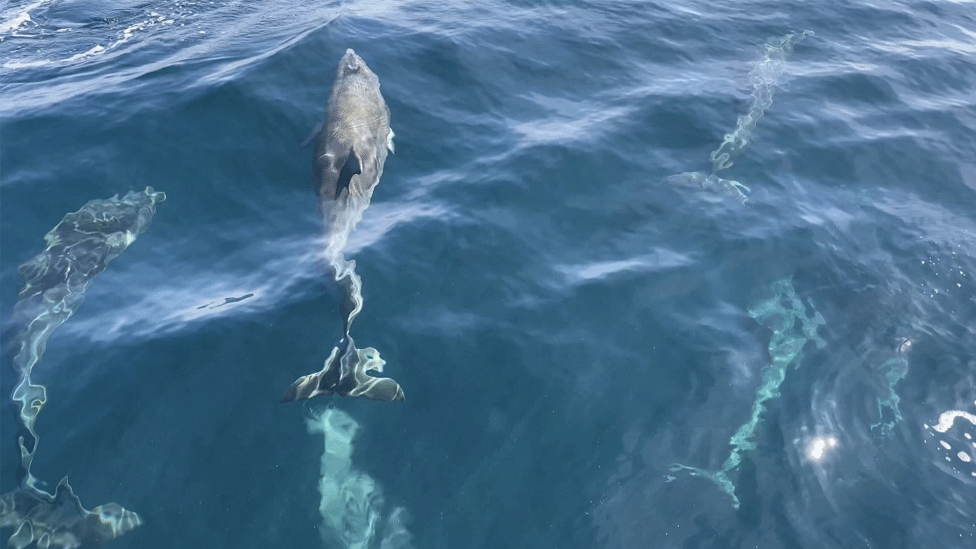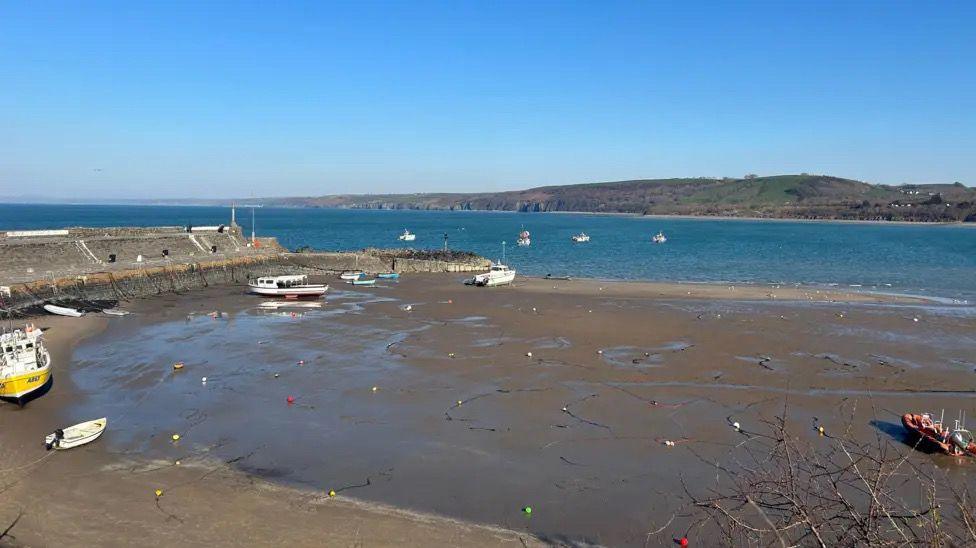Why are scientists trying to collect dolphin poo?

Did you know dolphin poo is white? You can see here in this picture behind the dolphin in the middle
- Published
When you think of dolphins frolicking in the sea, you may be picturing a warm, sunny, tropical island somewhere.
But did you know there are around 200 bottlenose dolphins living in Cardigan Bay just off the coast of Wales?
Well, scientists have been studying the pod of dolphins for years, but they have come up with a new way to learn more about them.
By studying their poo.
- Published3 October 2024
- Published25 May 2022
The team of conservationists funded by the Nature Networks Fund in collaboration with Aberystwyth University are trying to learn more about the dolphin's relationships and movement patterns.
They are therefore attempting to collect poo samples from as many dolphins in Cardigan Bay as possible using nets after the marine creatures do their 'business'.
They will then be able to send the poo to Aberystwyth University to be analysed to help understand what they have been feeding on and therefore, where they are getting their food from.
With enough data (poo), they will also be able to build individual profiles for each dolphin and perhaps even find similarities between biological family members.
But the poop isn't the only thing they will be looking closely at.
They will also attempt to match the samples with photo identification records of the dolphins gathered on camera by members of the Wildlife Trust of South and West Wales.

Cardigan Bay in Wales is not only a beauty spot for tourists, the dolphins love it too
Sarah Perry, the trust's marine conservation and research manager, said she hoped the study would "unravel the mysteries of bottlenose dolphin ecology in Cardigan Bay".
"This project covers an area of research that we have aspired to embark on over the past decade or so, and we are excited that it has come to fruition at a time when it is even more important that we build on our knowledge of the species in the waters around us."
